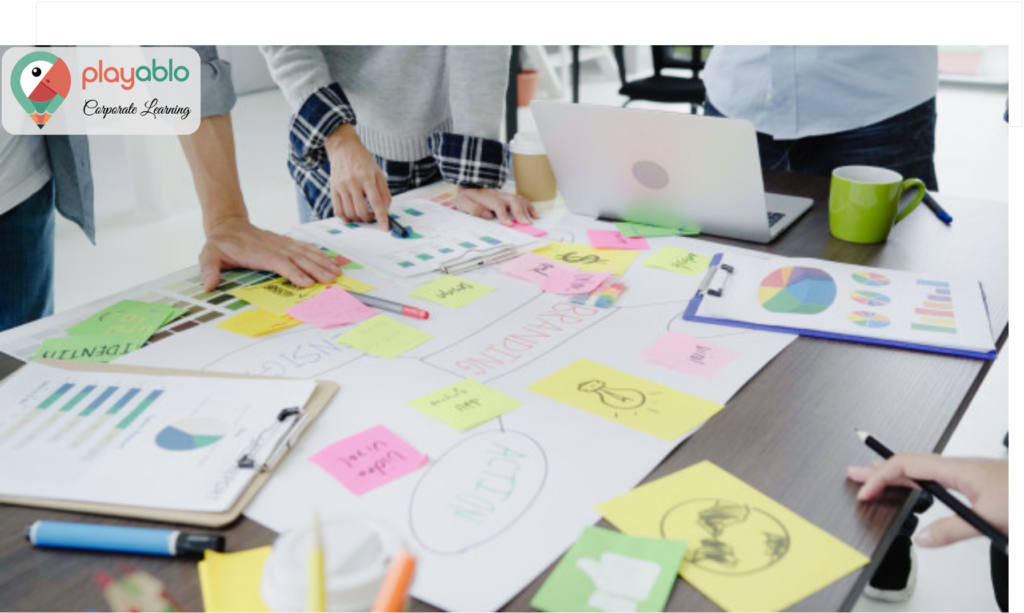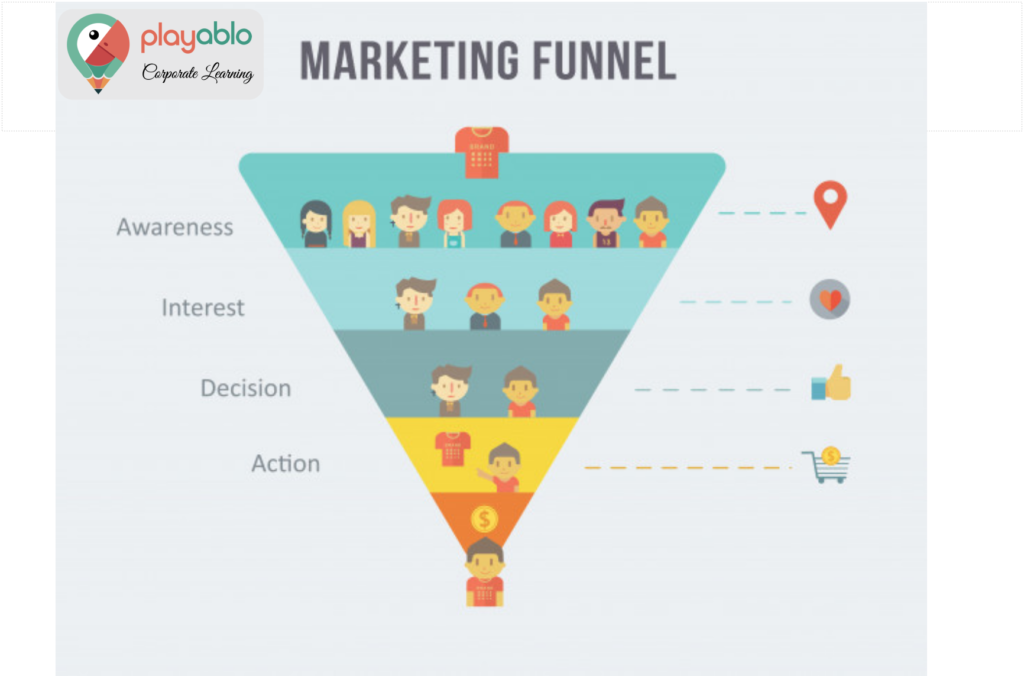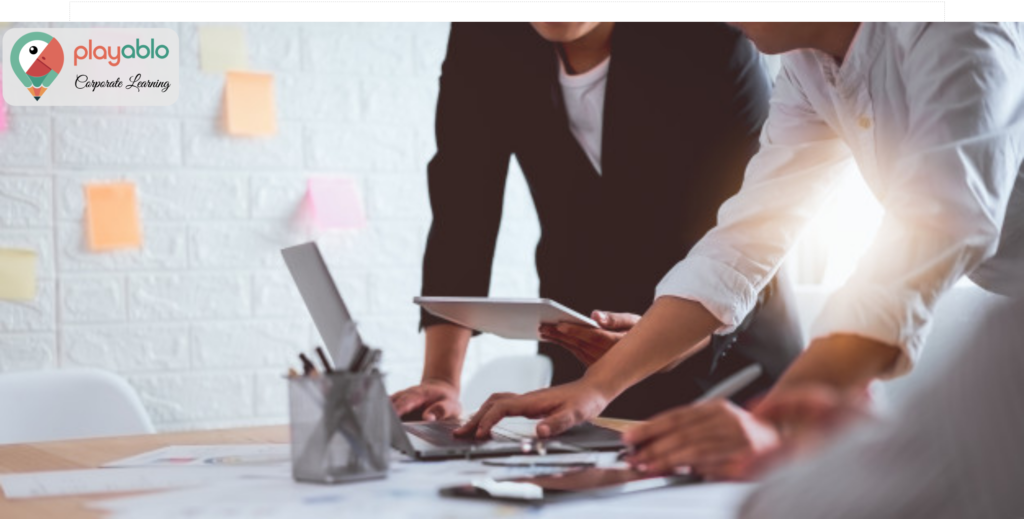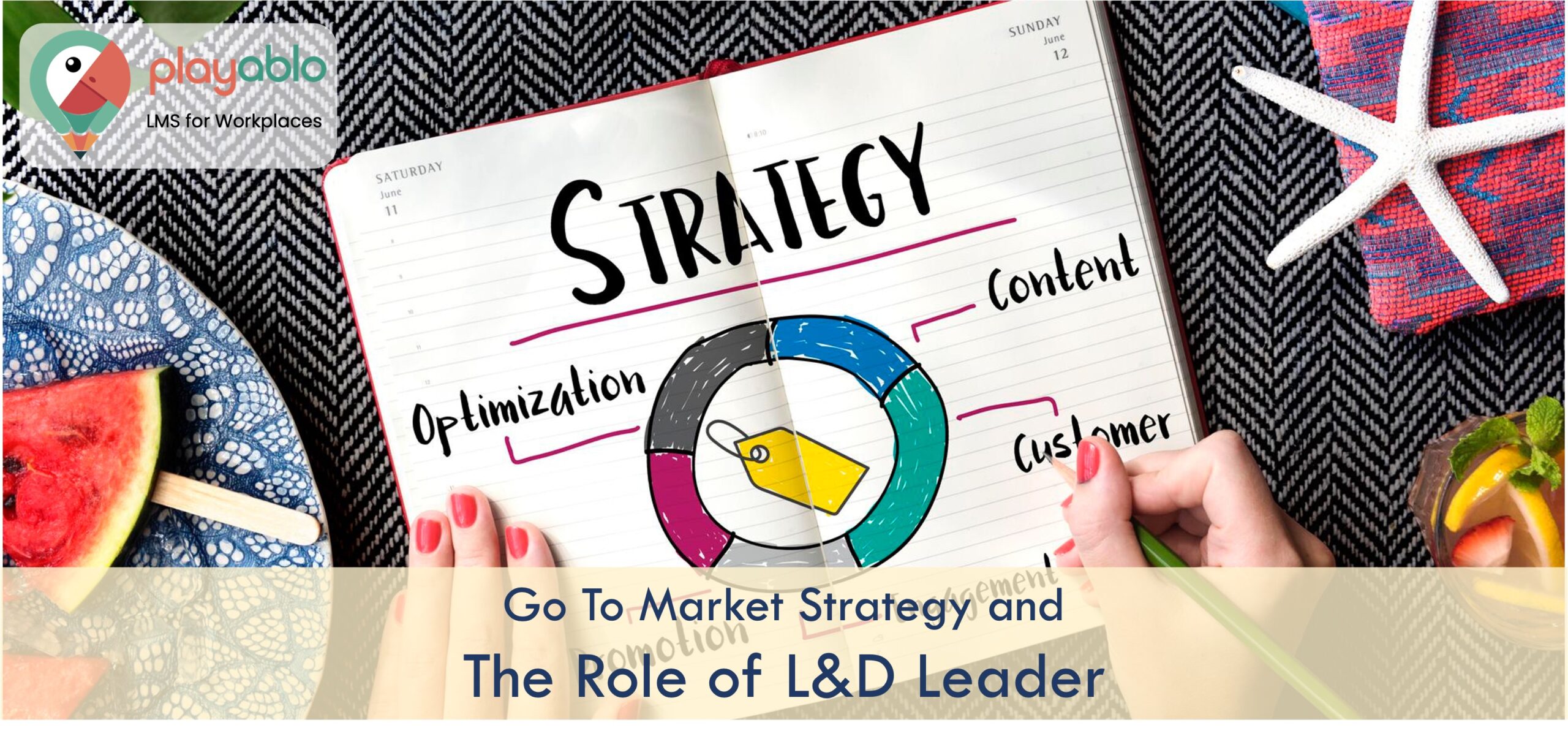As organizational L&D leaders, you know and appreciate that a solid marketing strategy is a crucial aspect of your business. On the revenue graph, you cannot reach points A to B without a proper plan. Harvard Business Review explains a thorough marketing strategy: “Good marketing management that directs clever strategies toward successful marketplace results.”
Of course, the mantra behind the sustainability of any organization lies in its innovative prowess. When the market is constantly evolving, L&D leaders need to innovate and improve continually so that their offerings do not become obsolete. And with each innovation, you need a specific marketing plan.
Every solid marketing plan for a new service or product also needs the backing of its well-trained and equipped workforce. A ready workforce can effectively help onboard new customers and transition existing ones. This opportunity is where the L&D leaders need to collaborate with the Sales and Marketing leadership within the organization. This collaboration will ensure alignment within the organization along with a delightful and seamless experience for your customers.
This article looks at two aspects of building this symbiotic relationship between the teams of marketing and L&D leaders. We first begin by looking at the intent and approach to building a high-quality Go To Market strategy. After that, we will dive deeply into how L&D leaders can align themselves to that GTM strategy by readying the workforce to support it end to end for customer delight.

Your marketing plan should be highly focused when you launch a new product or service. Obviously, you do not want to introduce a product/service that your target buyers do not need. You also would hate to unveil a solution in a market saturated with similar offerings. Again, your product is good, but your target audience or the timing is wrong. The result? You end up wasting resources on something that adds no value to your business.
Table of Contents
Then, what’s the answer to this burning question: how do you introduce new products and services in a market at the right time and to the right audience?
Well, the solution lies in creating a go-to-market, aka GTM strategy.
Additionally, in the post-COVID economy, the market is seeing a transformational shift in customer demands and requirements. In this case, companies need to be more agile, fast, and adaptive when launching new products. Organizations MUST embrace a well-thought-out go-to-market strategy — faster! How? Let’s first start with the GTM strategy.
What is a Go-to-market Strategy & What’s the Role of L&D Leaders?
A go-to-market strategy is a detailed plan that enables you to address a new market and a new audience. It includes “a business plan outlining the target audience, marketing plan, and sales strategy. Each product and market are different, therefore, each GTM strategy should be thoroughly thought out, mapping a market problem and solution a product offers” — Hubspot.
Pandemic or no pandemic, a GTM strategy reduces your time to market, cuts down costs associated with failed product launches, enhances the ability to adapt to change, minimizes innovation challenges, ensures a seamless customer experience, regulatory compliance, and successful product launch, reduces mistakes, ensures growth, and sets off a clear action plan.
So, how do you, as L&D leaders, contribute to creating the perfect GTM strategy? Here are some tried and tested methods.
Identify Buyer Personas
Start by identifying your target markets as well as the customer base. Now, understand how you can reach your target audience so that you can build a long-term relationship with your buyers.
Create a Value Matrix
A value matrix maps the product or service across different business needs and then defines the metrics on how to evaluate the success of the offering. A value matrix is used to communicate the purpose and benefits of your solution to all related stakeholders.
Define the Marketing Strategy
Your marketing team will determine the product or service’s place within the market at this stage. They also design a plan to permeate product awareness in the target market. This step can include experimenting with different advertising methods and testing various marketing platforms. Your strategy provides branding, lead generation, creating focused content, and designing a marketing website.
Understand the Customer’s Buying Journey

When your marketing strategy is in place, the next step is to understand the buyer’s journey — which includes all the stages that eventually result in a customer purchasing your product or service. It comprises the awareness stage, consideration stage, and decision stage.
Create the Sales Strategy
This is the final step when you introduce your offering to the market. In this stage, training forms an important part. You need to train the sales team so they have adequate knowledge to pitch and sell the product or service confidently. You must equip them with all the required tools and resources to enable them to identify, engage with, and sell to customers.
As L&D Leaders, How Do You Make Your Employees Go-to-market Ready?
These are just some of the go-to-market strategies you can implement to emerge victorious in a changing market. But how do you ensure that your employees are ready to embrace this change — and that too at a fast pace (especially in a pandemic-stricken economy)?
This responsibility lies with the L&D leaders. HR leaders MUST realize the importance of equipping their employees with the necessary know-how of market changes and the detailed features of new products and services. And as we already mentioned, training is essential to creating a sales plan for your GTM strategy.
A comprehensive GTM strategy can take a long time to formulate and execute. Cult Branding says, “Successful implementation of a new GTM strategy can take 12 to 36 months.” And this is an insanely long time if you consider the market — especially concerning COVID-19 — which demands results at a faster pace.
So, how do you reduce the aforementioned time frame? Well, one of the go-to answers is coming up with targeted online training modules. Virtual learning introduces flexibility, bite-sized consumption of knowledge, and all-time accessibility. Let’s outline its benefits in detail:
Go 100% Digital

A few years back, instructor-led classroom training (ILT) was still the norm. But now, offline learning frameworks have become almost obsolete. With organizations embracing the remote workspace model minus extensive travel, on-site training has become a concept of the past.
Now that companies quickly embrace virtual platforms, they have realized the multiple perks of digital learning methodologies via a SaaS-based LMS (for instance). Online learning does not decrease employee satisfaction or performance. In turn, it enhances knowledge absorption and application by making learning a flexible process. Couple this with eLearning’s time and monetary savings, and you will understand that going digital is now necessary.
The unprecedented rise in the demand for online training is made evident in this report published by Training Industry: “Trainingindustry.com has seen an 8.6% increase in web traffic over the past few weeks, with an 8,135% increase in topics related to remote learning, virtual instructor-led training (VILT), and leading through adversity and change. Additionally, articles focused on the advantages of eLearning have seen an 88% increase in traffic. Overall, our visitors are staying longer — with a 12% increase in time spent on page — and searching for solutions to their problems.”
Advantages of Online Delivery Models
So, as you can see, as L&D leaders, the time has come to amp up your online training delivery models. eLearning tools such as micro-learning and mobile learning LMS websites can enable your employees to access information on the go.
Ad: PlayAblo’s Enterprise-Grade Micro-Learning platform is built for millennial learners. Micro-Learning, assessments, and gamification features ensure learning outcome measurement and sustained engagement.
Find out more and request a custom demo!
They can quickly learn about the new solutions and services in this changing market. They can pitch your offerings to anxious customers with efficient digital staff training. As mentioned, detailed explanations are needed to convince the current, uncertain consumer. And online training infuses your workforce with the right resources and knowledge to coerce your customers into seeking your services.

Additionally, experts have pointed out that with our natural resources gradually depleting, more global pandemics will strike in the future. Therefore, expecting another economic crisis in the coming years is better. This translates to companies adopting long-term measures regarding staff training and employee skilling. In short, the L&D and HR leadership MUST focus on long-term solutions, not quick, temporary fixes.
To buckle up for the future, online corporate training should remain the focus for L&D leaders.
You must up your efforts in developing and sustaining an ambitious digital learning framework. As per an article by Forbes: “Organizations may want to cut costs and exercise extreme caution in investments not directly related to revenue creation, this is not the time to disinvest in training due to budget restrictions. Investments in training programs with flexible and ready-to-run technologies are crucial to creating adaptive organizations. And if we’ve learned anything this year it’s that adaptable, well-trained people are a driving force behind the businesses that will win in the long run.”
Wrapping it Up
L&D leaders in organizations that can leverage eLearning to build a connection between the market, people, and performance will climb up the ladder of success in the upcoming years. And when you are planning your pathbreaking online corporate training strategy to make your employees market-ready, you can seek the help of PlayAblo — to guide you through this critical journey.
Ad: PlayAblo’s Enterprise-Grade Micro-Learning platform is built for millennial learners. Micro-Learning, assessments, and gamification features ensure learning outcome measurement and sustained engagement.
Find out more and request a custom demo!





